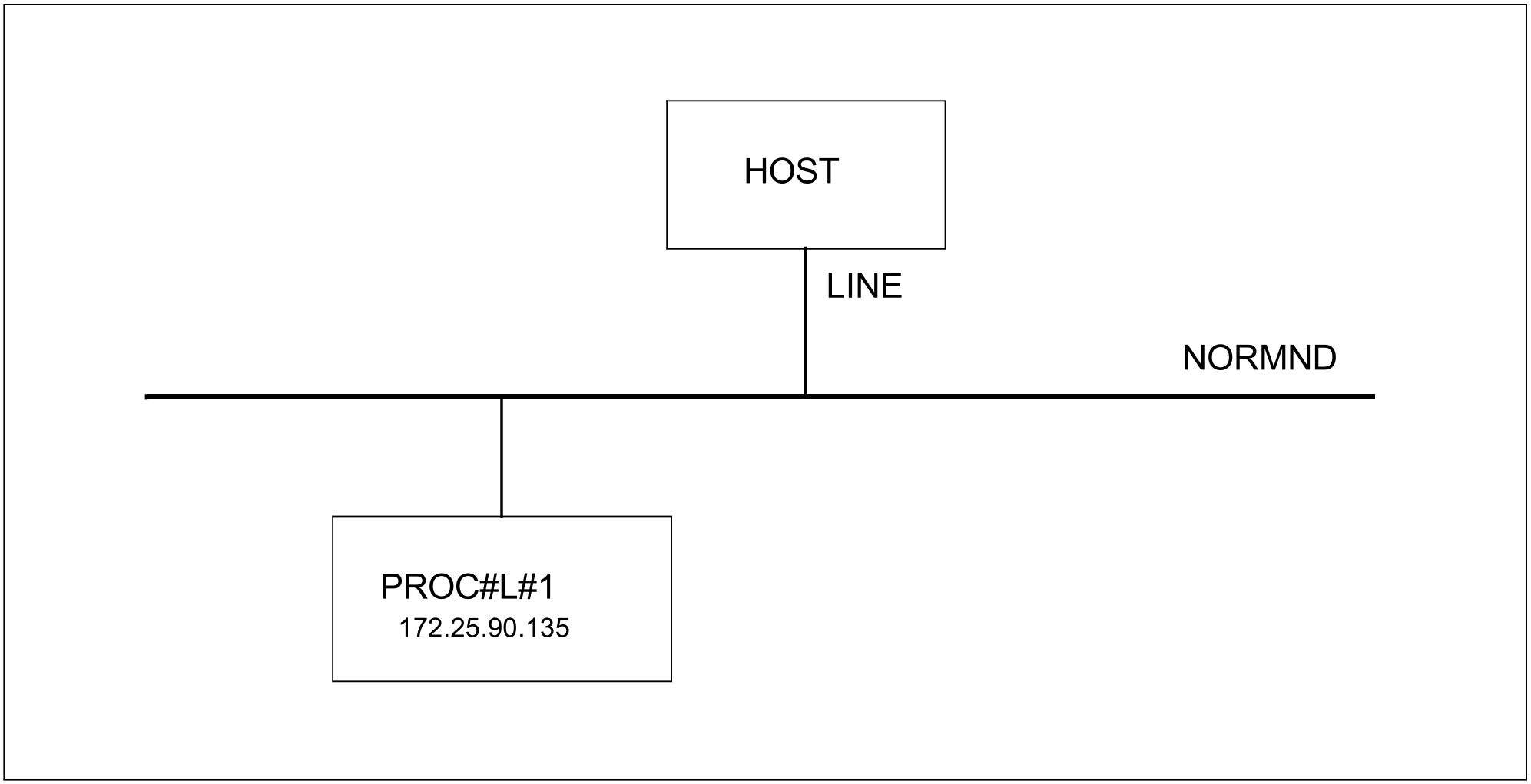In this example a local processor is defined with a route. In BCAM there are three ways of doing this.
Dynamic generation
/REMARK Definition of the LAN node NORMND
/CREATE-PROCESSOR PROCESSOR-NAME=PROC#L#1,ADMINISTRATION-TYPE=*BCAM
/CREATE-ROUTE ROUTE-NAME=PROC#L#1,PATH=*NODE(NODE-NAME=NORMND, -
/ L3-PROTOCOL=*IP(IP-ADDRESS=172.25.90.135))
Definition through AEC (automatic end system creation)
The local processor PROC#L#1 shown in the figure can alternately be specified in the processor file and generated by automatic end system creation. To do this the “automatic end system creation” option must be specified. In addition, the system must be included in the processor file.
Setting options
/BCOPTION A-E-C=ON
Entry in the processor file
PROC#L#1 IP 172.25.90.135
Definition through DNS
Another way of defining the local processor PROC#L#1 is to use DNS. To do this you must start the LWRESD utility routine (by default this is already possible in the DCOPT/ DCSTART command) and specify the option for DNS. DNS accesses can be restricted using the MODIFY-DNS-ACCESS command.
Entries in the SOF file
/MODIFY-BCAM-OPTIONS DNS-OPTIONS=*PARAMETERS(DNS-USAGE=*ON)
/MODIFY-DNS-ACCESS IP-ADDRESS-RANGE= -
/ *ADD(FROM=172.25.90.135,TO=172.25.90.135)
/MODIFY-DNS-ACCESS IPV6-ADDRESS-RANGE=*NONE
/MODIFY-DNS-ACCESS NAMES=PROC#L#1

